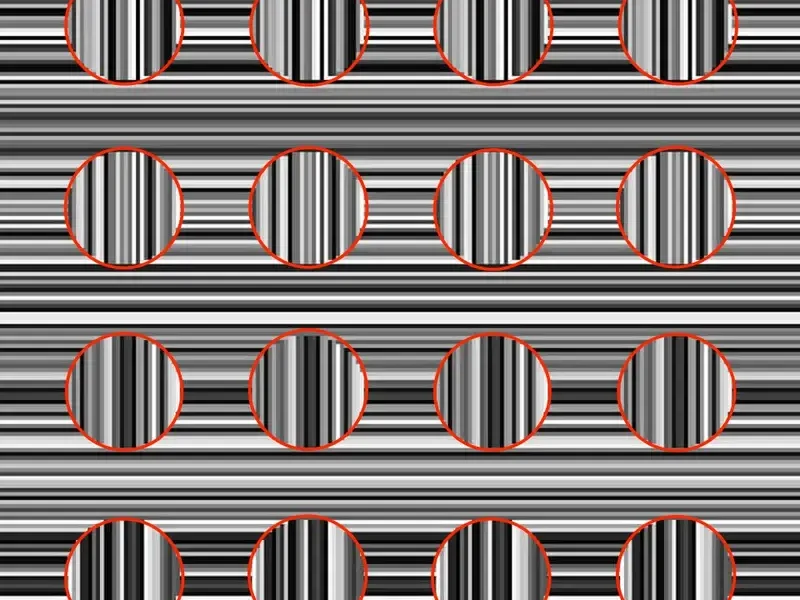The coffer illusion, a fascinating optical illusion, has intrigued and perplexed viewers since its introduction. This illusion demonstrates how our brains interpret spatial relationships and perspective, revealing the intricacies of visual perception. In this detailed exploration, we will delve into the mechanics of the coffer illusion, its psychological underpinnings, historical context, and practical applications. By the end of this article, you’ll gain a deeper appreciation for the complexity of visual illusions and their impact on our understanding of perception.
Understanding the Coffer Illusion
At its core, the coffer illusion is a geometric illusion that plays with our perception of depth and perspective. The illusion is named after the “coffer,” or “coved ceiling,” which is the visual effect it creates. The most common version of this illusion involves a set of parallel lines and a series of concentric shapes or boxes that appear to warp or skew in three-dimensional space. When viewed, these shapes create the illusion of a 3D structure where none exists.
The classic example of the coffer illusion features a series of rectangles arranged in a way that, despite being drawn on a flat surface, appear to recede into the background. The rectangles are typically arranged so that they seem to form a tunnel-like structure, giving an impression of depth and spatial orientation that is entirely an optical effect.
The Psychology Behind the Coffer Illusion
The coffer illusion operates on several principles of visual perception:
- Perspective and Depth Perception: Our brains use various cues to interpret depth and distance. In the coffer illusion, the arrangement of lines and shapes tricks the brain into perceiving depth where there is none. This is achieved through a deliberate manipulation of perspective lines and the placement of geometric shapes.
- Size and Proportion: The illusion relies on the relative sizes of the shapes and how they are spaced. Our brains are wired to perceive objects that are closer as larger and objects that are farther away as smaller. The coffer illusion exploits this by placing shapes in a way that causes us to perceive them as receding into space.
- Contextual Cues: Our perception is also influenced by contextual cues, such as the surrounding shapes and patterns. In the coffer illusion, the arrangement of the shapes provides contextual information that leads us to interpret the pattern as having depth.
Historical Context and Development
The coffer illusion, like many optical illusions, has historical roots in the study of visual perception and geometry. The use of geometric patterns to create optical effects dates back to ancient art and architecture. For instance, the Greeks and Romans used perspective and geometric patterns in their frescoes and mosaics to create the illusion of depth on flat surfaces.
The modern study of optical illusions, including the coffer illusion, gained prominence with the advent of psychology and cognitive science in the 19th and 20th centuries. Researchers such as M.C. Escher, a Dutch graphic artist, explored and popularized optical illusions through his intricate and mind-bending artworks. Escher’s work, although not directly related to the coffer illusion, influenced how we understand and interpret geometric illusions.
Applications and Implications
Understanding the coffer illusion and other optical illusions has practical implications beyond mere visual tricks. Here are a few areas where the principles of the coffer illusion are applied:
- Art and Design: Artists and designers use principles of optical illusion to create compelling visual effects in their work. The coffer illusion and similar tricks can be employed to draw attention, create focal points, and add depth to designs.
- Psychological Research: Optical illusions, including the coffer illusion, are valuable tools in psychological research. They help scientists study visual perception, cognitive processing, and the brain’s interpretation of spatial information.
- Architecture and Engineering: In architecture and engineering, understanding visual perception can aid in designing spaces that play with depth and perspective. The principles of optical illusions can be used to create engaging and aesthetically pleasing environments.
- Education: Optical illusions are used in educational settings to teach concepts related to visual perception, geometry, and cognitive psychology. They provide engaging ways to illustrate complex ideas and enhance learning experiences.
Creating Your Own Coffer Illusion
If you’re intrigued by the coffer illusion and want to try creating one yourself, here’s a simple guide to get you started:
- Materials Needed: A piece of paper, a ruler, a pencil, and a black marker or pen.
- Drawing the Illusion:
- Start by drawing a series of concentric rectangles or squares on the paper. Ensure that each successive shape is slightly smaller than the previous one and centered.
- Use the ruler to ensure that the lines are straight and evenly spaced.
- Once you have the basic shapes, you can enhance the illusion by adding shading or color to emphasize the depth and perspective.
- Experiment and Observe: Play with different arrangements, sizes, and colors to see how they affect the illusion. Observe how changes in the design alter the perceived depth and spatial orientation.
Conclusion
The coffer illusion is a remarkable example of how our brains interpret visual information and how geometric patterns can create compelling optical effects. By understanding the principles behind the coffer illusion, we gain insights into the complexities of visual perception and the ways in which our brains process spatial information.




